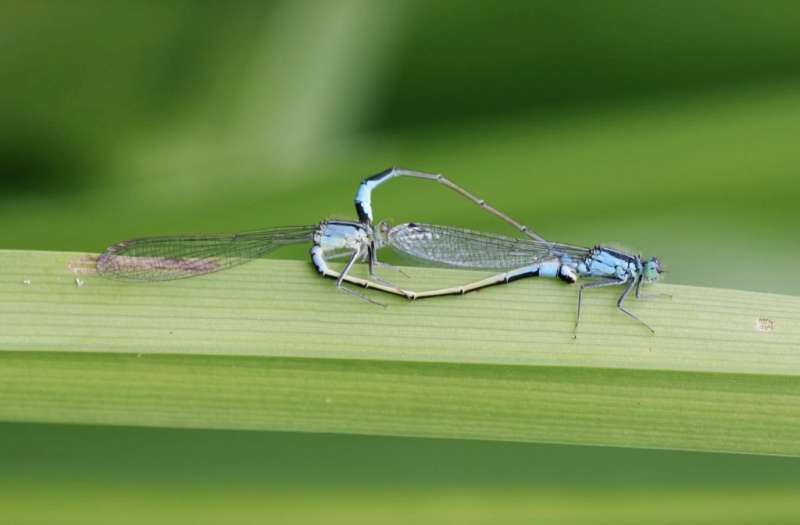Credit: Rachael Dudaniec
Damselflies are evolving rapidly as they expand their range in response to a warming climate, according to new research led by Macquarie University researchers in Sydney.
"Genes that influence heat tolerance, physiology, and even vision are giving them evolutionary options to help them cope with climate change. Other insects may not be so lucky," says Dr. Rachael Dudaniec, lead author of the paper.
The study, published in Molecular Ecology yesterday, investigated the genetics of an insect's capacity to adapt and survive in a changing world by looking at the blue-tailed damselfly (Ischnura elegans) in Sweden.
"Damselflies, like other aquatic insects, are faced with a dilemma given the current and unprecedented rate of global warming," says Rachael.
"Either they perish, move elsewhere or adapt to the new environmental conditions. It's a classic case of fight or flight."
The researchers tracked the frequency of particular genes in the damselfly population as environmental conditions—such as temperature, rainfall, wind speed and tree cover— changed over their range.
They found that the species' genes strongly responded to changes in the environment as you moved from the southern core of the species' distribution to the northern edge of their current range.
"We examined the degree of turnover from one variant of a gene to another variant," says Rachael. "For example, how strongly does one variant of a gene change to another variant as you move to higher latitudes."
"These patterns show us how natural selection acts upon the damselfly.
"Genes that are more favourable in the new environments become more common, so that the damselfly is better adapted to its surroundings."
By looking at where these genes are on the damselfly's genome, the researchers found that they performed important functions related to heat tolerance, physiology, and even visual processing.
"These genes may be helping these insects deal with extreme climates, and how they find food and mates as their distribution shifts into novel northern habitats," says Rachael.
"Our research suggests that the blue-tailed damselfly has a wealth of evolutionary strategies available to help it adapt to a changing climate."
But, she warns, this is certainly not the case for all species.
"Our research highlights the need to further investigate how different species will cope with climate change," says Rachael.
"Identifying the species that are going to struggle the most in changing environments will allow us to direct conservation actions more appropriately."
More information: Rachael Y. Dudaniec et al. Signatures of local adaptation along environmental gradients in a range-expanding damselfly (Ischnura elegans ), Molecular Ecology (2018). DOI: 10.1111/mec.14709
Journal information: Molecular Ecology
Provided by Macquarie University
























